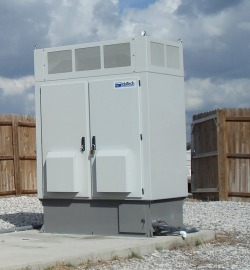FUEL CELLS
BACKGROUND INFORMATION

Abstract
In our paper we discuss all the finding from our research done on fuel cells. We did not have much knowledge of the subject matter when we started but found out a lot of useful information to help us complete our project. During our search we found out that a fuel cell is a cell that produces electricity by oxidation of a fuel. They are economically and environmentally friendly because of their low production cost, low pollution production, and long lasting life. Fuel cells are used in aircrafts, ships, trains, buses, motorcycles, cars, forklifts, and trucks. Our research allowed us to put together a curriculum for young students to learn about fuel cells and experiments on how to make them.
Background
Our world is changing very rapidly and we are running out of natural resources such as oil and natural gas. There is also a problem with pollution and sustainability with our planet. There is one solution that can solve both these problems and make more sense economically for everyone around the globe. Fuel cells are a cell that produces electricity by oxidation of a fuel (i.e. hydrogen and oxygen, or zinc and air). They can be traced all the way back to 1839 but the most recent interest in them started in the 1990’s when we realized the need for other sources of energy. Fuel cells help our environment by costing less to produce, lasting longer, and producing less pollution. When we first began our research of fuel cells we knew that they worked as some kind of alternative energy, but didn’t know how they worked or the benefits they provided. As we researched we learned they are most commonly found in aircrafts, ships, trains, buses, motorcycles, cars, forklifts, and trucks. Recently mobile technology has begun testing to implement fuel cells in devices such as phones and laptops. Fuel cells are used throughout the U.S. Armed Forces and have given them a distinct advantage against any enemy. There are many types of fuel cells that run on different energy sources such as lithium carbonate and potassium hydroxide. Each of the different kind of cells have advantages and disadvantages that can fit a specific use to power our world. If we are able to bring knowledge about fuel cells to young children we will be helping our environment for the future. Knowing the advantages and importance of using fuel cells will make them more environmentally and economically conscious.
Chapter 3. (2009). Retrieved April 28, 2010, from Electrochemistry: http://sci-toys.com/scitoys/scitoys/echem/fuel_cell/fuel_cell.html
Segura, A. F. (2009). Fuel Cells: History and updating. A Walk Along Two Centuries. Elsevier , 2309-2322.
In our paper we discuss all the finding from our research done on fuel cells. We did not have much knowledge of the subject matter when we started but found out a lot of useful information to help us complete our project. During our search we found out that a fuel cell is a cell that produces electricity by oxidation of a fuel. They are economically and environmentally friendly because of their low production cost, low pollution production, and long lasting life. Fuel cells are used in aircrafts, ships, trains, buses, motorcycles, cars, forklifts, and trucks. Our research allowed us to put together a curriculum for young students to learn about fuel cells and experiments on how to make them.
Background
Our world is changing very rapidly and we are running out of natural resources such as oil and natural gas. There is also a problem with pollution and sustainability with our planet. There is one solution that can solve both these problems and make more sense economically for everyone around the globe. Fuel cells are a cell that produces electricity by oxidation of a fuel (i.e. hydrogen and oxygen, or zinc and air). They can be traced all the way back to 1839 but the most recent interest in them started in the 1990’s when we realized the need for other sources of energy. Fuel cells help our environment by costing less to produce, lasting longer, and producing less pollution. When we first began our research of fuel cells we knew that they worked as some kind of alternative energy, but didn’t know how they worked or the benefits they provided. As we researched we learned they are most commonly found in aircrafts, ships, trains, buses, motorcycles, cars, forklifts, and trucks. Recently mobile technology has begun testing to implement fuel cells in devices such as phones and laptops. Fuel cells are used throughout the U.S. Armed Forces and have given them a distinct advantage against any enemy. There are many types of fuel cells that run on different energy sources such as lithium carbonate and potassium hydroxide. Each of the different kind of cells have advantages and disadvantages that can fit a specific use to power our world. If we are able to bring knowledge about fuel cells to young children we will be helping our environment for the future. Knowing the advantages and importance of using fuel cells will make them more environmentally and economically conscious.
Chapter 3. (2009). Retrieved April 28, 2010, from Electrochemistry: http://sci-toys.com/scitoys/scitoys/echem/fuel_cell/fuel_cell.html
Segura, A. F. (2009). Fuel Cells: History and updating. A Walk Along Two Centuries. Elsevier , 2309-2322.
